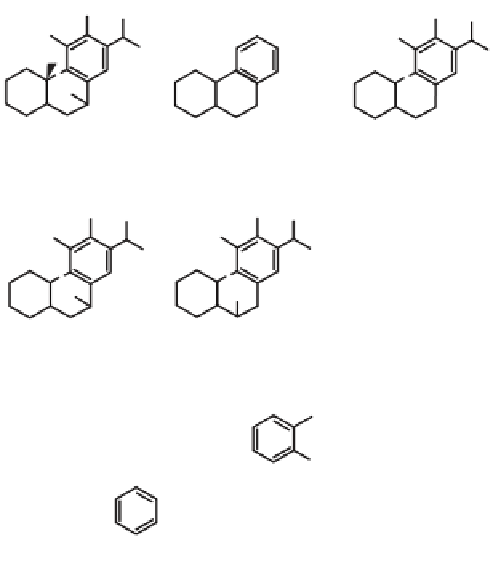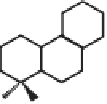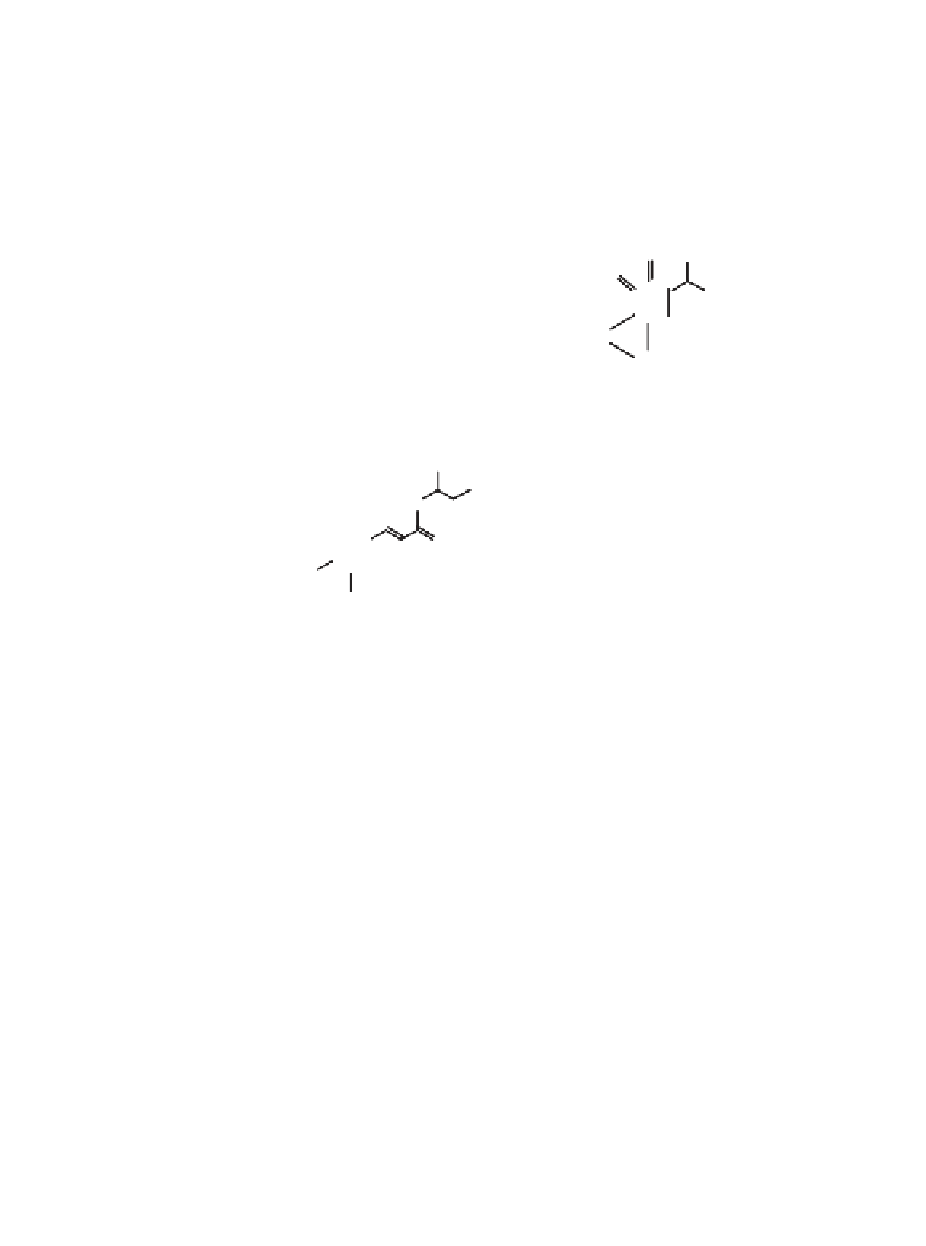Biomedical Engineering Reference
In-Depth Information
OH
OH
OH
HO
HO
HOOC
HO
O
O
O
O
OH
Carnosol
Carnosic Acid
Rosmanol
OH
OH
O
HO
HO
O
O
O
O
O
OH
OH
Isorosmanol
Epirosmanol
Rosmariquinone
OH
HOOC
OH
O
O
HO
Rosmarinic Acid
OH
FIGURE 6.21
Structure of antioxidative components isolated from rosemary.
rosemary extracts because of the variable and questionable oxidation conditions
used. Subsequent studies by Frankel and co-workers
98
evaluated the antioxidant
activity of commercial rosemary extract as well as the active components, carnosol,
carnosic acid, and rosmarinic acid on the oxidation of tocopherol-stripped corn oil
as well as in corn oil-in-water emulsions. With the exception of carnosol, rosemary
extract, carnosic and rosmarinic acids, and
-tocopherol all exhibited strong anti-
oxidant activity. In the case of the corn oil-in-water emulsions, rosemary extracts
and constituents exerted lower antioxidant activities with rosmarinic acid being the
least active. Changing the pH affected the efficacy of these constituents as carnosol
and carnosic acid were far more active antioxidants in emulsion systems buffered
between pH 4 and 5 compared to pH 7. Richheimer et al.
99
analyzed the phenolic
diterpenes in rosemary and commercial rosemary extracts by HPLC. Carnosic acid
was the major diterpene with much smaller amounts of carnosol. Using the Rancimat
method to monitor the stability of soybean, these researchers found carnosol to be
the most potent antioxidant. Carnosol was far more effective than BHA and BHT
but less than TBHQ. A recent study by Guntensperger and co-workers
100
showed
the addition of refined rosemary extract, particularly after precooking, extended the
shelf life of heat-sterilized meat.
The abundance of phenolic compounds in plants has resulted in a large number
of publications on their presence and efficacy as antioxidants.
Table 6.5
is a selection
of some of the many papers published in this area in the last few years.
α















Search WWH ::

Custom Search